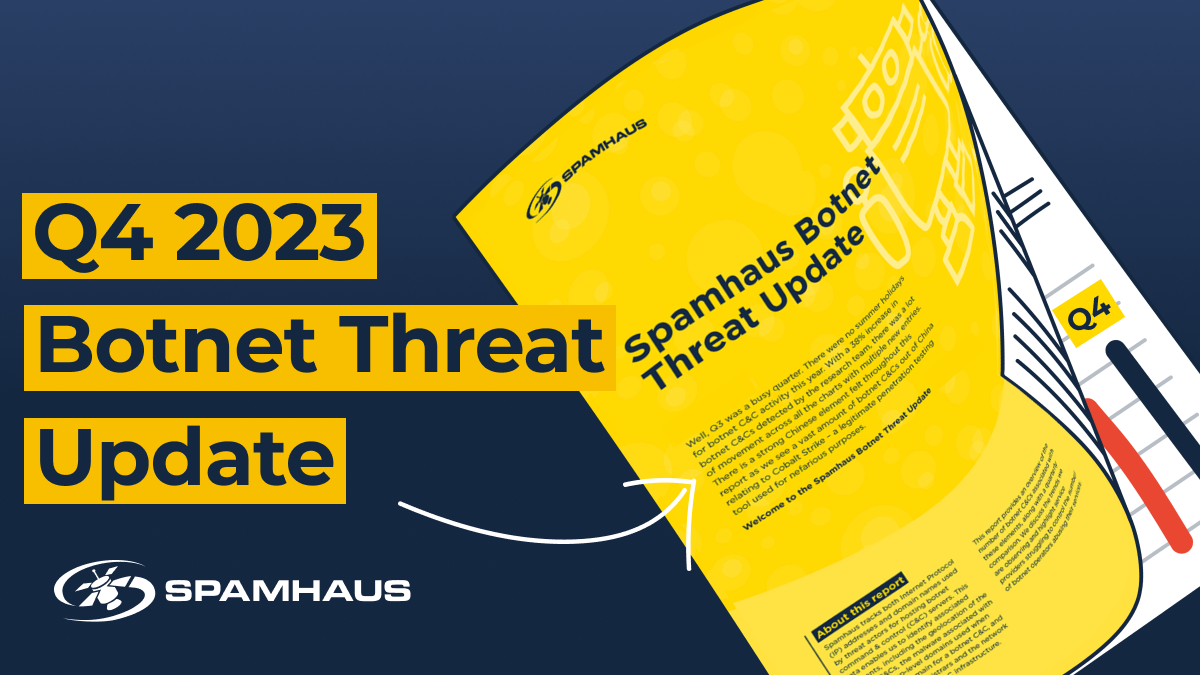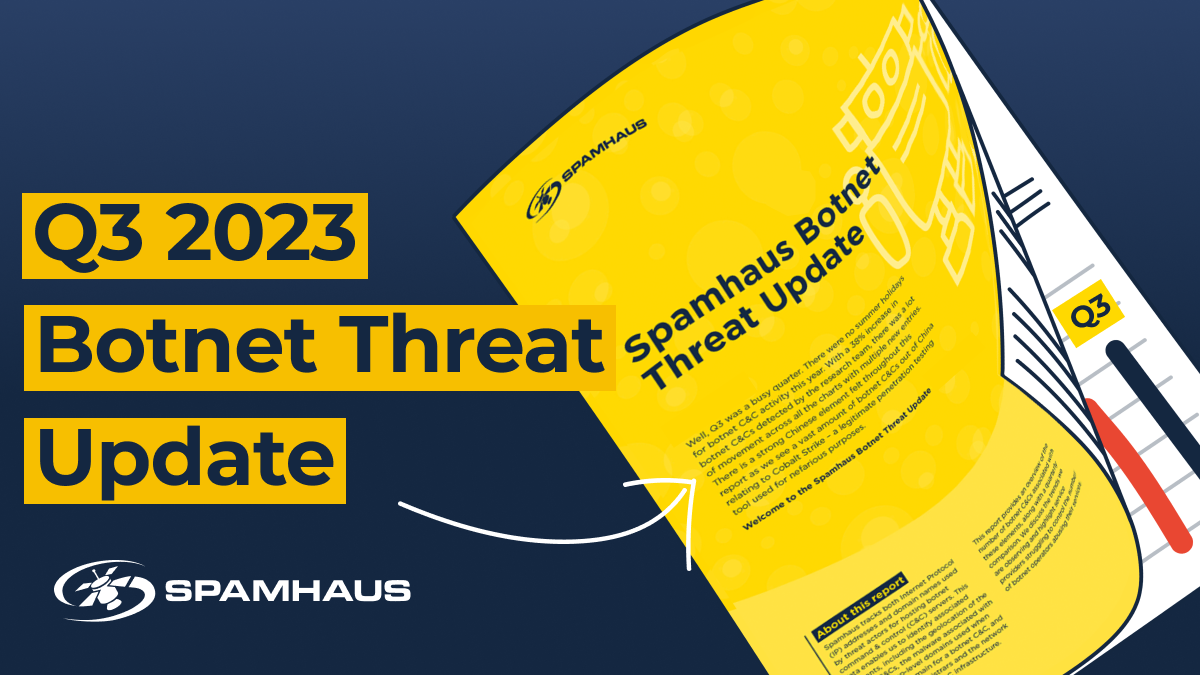report
Botnet Threat Update Q1 2019
Spamhaus Malware Labs observed significant changes in the malware that's associated with botnet command and control (C&C) servers, most notably a preference for cybercriminals to utilize crimeware kits. Read more here.


